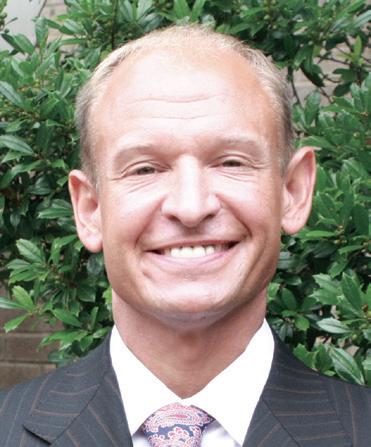
2 minute read
The Cavalry: ARORP and the administration of opioid settlement funds
In the Summer 2022 issue of County Lines, I wrote about the formation of the Arkansas Opioid Recovery Partnership (ARORP) and the hiring of Kirk Lane as ARORP director. Less than six months later, ARORP is bringing the cavalry to your communities, families, and opioid addicts. ARORP has come so far already that this edition of County Lines will also include an update from ARORP Director Lane and ARORP Deputy Director Tenesha Barnes about ARORP programs and projects already making a difference.

With this article, I will outline the important components of the process under which ARORP receives funding proposals, reviews and analyzes proposals, and approves and funds proposals, to abate the opioid epidemic in Arkansas. We have invested significant brainpower and care to create a process that is simple, evidence-driven, thorough, and efficient.
In September 2022, Arkansas cities and counties, through the directors of the Arkansas Municipal League (AML) and Association of Arkansas Counties (AAC), approved distribution agreements that are incorporated as exhibits into the Arkansas Opioids Memorandum of Understanding (MOU). The MOU, executed in July 2021 by the Governor, Attorney General, AAC director, and AML director, includes an equal split of Arkansas settlement dollars among the state, counties, and cities — 1/3 of every Arkansas dollar is allocated to the state, 1/3 is allocated to cities, and 1/3 is allocated to counties. The county and city distribution agreements govern the distribution and use of settlement funds designated for Arkansas counties and cities. Both the MOU and the distribution agreements are posted on the ARORP website along with other important legal documents: www.arorp.org/about/.
Through the county and city distribution agreements, the counties and cities created ARORP, and directed that their opioid settlement funds be disbursed by ARORP in a manner consistent with requirements and restrictions contained in opioid settlement agreements and court orders. It is important to follow these requirements; most of the settlements include payment streams across many years, and failure to follow the requirements of the settlements could jeopardize future settlement payments. This is one reason we created a Qualified Settlement Fund (QSF) through an Arkansas court — to provide court supervision of the process and ensure the proper administration of the counties’ and cities’ settlement funds and opioid abatement program. While the QSF court supervises the settlement funds and the QSF administrator manages the settlement funds, the administration of abatement funding is done by ARORP, as set forth in the county and city distribution agreements.
The distribution agreements define the ARORP mission statement: “Evaluate proposals, make recommendations, and em- power evidence-based programs and strategies to abate the Arkansas opioid epidemic, in a manner consistent with approved purposes as defined in the Arkansas Opioids MOU, settlement agreements, and court orders approving settlements and bankruptcies.”
Consistent with the MOU, the many settlement agreements and court orders, and the ARORP mission statement, nine principles guide the work of ARORP. Each guiding principle is thoughtful and important:
1. The Partnership seeks a shared framework for disbursing opioid abatement funds. Abatement efforts will be most effective if Arkansas governments unite and work cooperatively together, as they have in opioid litigation, on behalf of the people.
2. The Partnership should seek to use limited funds to supplement and expand existing public and private abatement efforts and funding, rather than supplanting or duplicating existing abatement efforts and funding.
3. The Partnership should fund public and private evidence-based projects, and funded projects should be evaluated for effectiveness moving forward, with ongoing funding contingent on demonstrated effectiveness as appropriate.
4. The Partnership should fund public and private programs and strategies that abate the opioid epidemic at the community and family levels.
5. The Partnership should support diversion from arrest/ incarceration and should support access to peer support and treatment in correctional settings.
6. The Partnership should fund anti-stigma programs and involve communities in education and prevention efforts.
7. Priority should be given to evidence-based and evidenceinformed prevention, treatment, recovery, or harm reduction programs, services, supports, and resources.
8. The Partnership should ensure diversity of representation and funding, including racial and geographic diversity, including people with lived experience, and including less populated and geographically isolated communities.
9. The Partnership will operate with all reasonable transparency.










